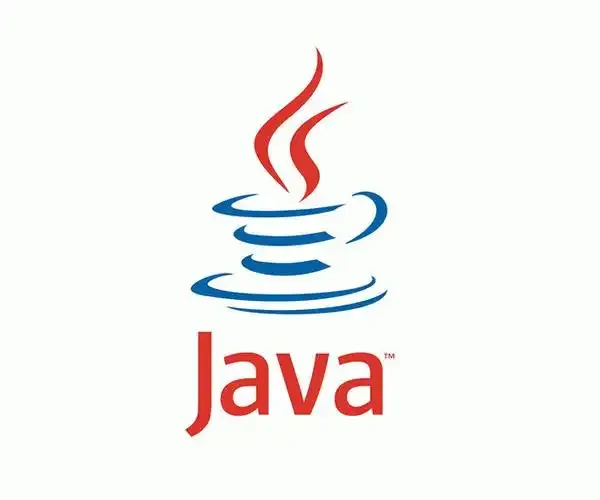1160 字
6 分钟
Java基本数据类型
基本数据类型
包装类
内存位置
注意:基本数据类型存放在栈中是一个常见的误区!
基本数据类型的存储位置取决于它们的作用域和声明方式。
如果它们是局部变量,那么它们会存放在栈中;如果它们是成员变量,那么它们会存放在堆/方法区/元空间中。
public class Test {
// 成员变量,存放在堆中
int a = 10;
// 被 static 修饰的成员变量,JDK 1.7 及之前位于方法区,1.8 后存放于元空间,均不存放于堆中。
// 变量属于类,不属于对象。
static int b = 20;
public void method() {
// 局部变量,存放在栈中
int c = 30;
static int d = 40; // 编译错误,不能在方法中使用 static 修饰局部变量
}
}缓存机制
数字类型
Java 基本数据类型的包装类型的大部分都用到了缓存机制来提升性能。
Byte,Short,Integer,Long这 4 种包装类默认创建了数值 [-128,127] 的相应类型的缓存数据Character创建了数值在 [0,127] 范围的缓存数据Boolean直接返回TrueorFalse。- 两种浮点数类型的包装类
Float,Double并没有实现缓存机制。
| 包装类 | 缓存对象 |
|---|---|
| Byte | [-128, 127] |
| Short | [-128, 127] |
| Integer | [-128, 127] |
| Long | [-128, 127] |
| Float | 无 |
| Double | 无 |
| Character | 0-127 |
| Boolean | TRUE和FALSE |
// Integer 有缓存机制
Integer i1 = 33;
Integer i2 = 33;
System.out.println(i1 == i2);// 输出 true
// Float没有缓存机制
Float i11 = 333f;
Float i22 = 333f;
System.out.println(i11 == i22);// 输出 false
// Double没有缓存机制
Double i3 = 1.2;
Double i4 = 1.2;
System.out.println(i3 == i4);// 输出 false下面我们来看一个问题:下面的代码的输出结果是 true 还是 false 呢?
Integer i1 = 40;
Integer i2 = new Integer(40);
System.out.println(i1==i2);Integer i1=40 这一行代码会发生装箱,也就是说这行代码等价于 Integer i1=Integer.valueOf(40) 。因此,i1 直接使用的是缓存中的对象。而Integer i2 = new Integer(40) 会直接创建新的对象。
因此,答案是 false 。
记住:所有整型包装类对象之间值的比较,全部使用 equals 方法比较。
valueOf()里面有关于如何使用的缓存的相关代码
Integer缓存实现:
@jdk.internal.ValueBased
public final class Integer extends Number
implements Comparable<Integer>, Constable, ConstantDesc
{
@IntrinsicCandidate
public static Integer valueOf(int i) {
if (i >= IntegerCache.low && i <= IntegerCache.high)
return IntegerCache.cache[i + (-IntegerCache.low)];
return new Integer(i);
}
private static class IntegerCache {
static final int low = -128;
static final int high;
static final Integer[] cache;
}
}Boolean缓存实现:
@jdk.internal.ValueBased
public final class Boolean implements java.io.Serializable,
Comparable<Boolean>, Constable
{
public static final Boolean TRUE = new Boolean(true);
public static final Boolean FALSE = new Boolean(false);
@IntrinsicCandidate
public static Boolean valueOf(boolean b) {
return (b ? TRUE : FALSE);
}
}字符串
public void stringTest() {
String str = new("Hello ") + new("World!");
String str1 = "Hello World!";
System.out.println(str == str1); // false
}
public void stringTest() {
String str = new("Hello ") + new("World!");
str.intern(); // 放到常量池中
String str1 = "Hello World!";
System.out.println(str == str1); // true (JDK 6 仍然是false)
}
public void stringTest() {
String str = new("Hello ") + new("World!");
String str1 = "Hello World!";
str.intern(); // 放到常量池中
System.out.println(str == str1); // false
}在JDK 6中第二个test也是false,因为字符串常量池存放在方法区(即永久代中)
JDK 7及以后字符串常量池存放在堆空间
自动拆装箱
- 装箱:将基本类型用它们对应的引用类型包装起来;
- 拆箱:将包装类型转换为基本数据类型;
装箱其实就是调用了 包装类的valueOf()方法,拆箱其实就是调用了 xxxValue()方法。
因此,
Integer i = 10等价于Integer i = Integer.valueOf(10)int n = i等价于int n = i.intValue();
注意:如果频繁拆装箱的话,也会严重影响系统的性能。我们应该尽量避免不必要的拆装箱操作。
// 这个代码会频繁拆装箱
private static long sum() {
// 应该使用 long 而不是 Long
Long sum = 0L;
for (long i = 0; i <= Integer.MAX_VALUE; i++)
sum += i;
return sum;
}浮点数精度
如何解决精度丢失?
BigDecimal 可以实现对浮点数的运算,不会造成精度丢失。通常情况下,大部分需要浮点数精确运算结果的业务场景(比如涉及到钱的场景)都是通过 BigDecimal 来做的
BigDecimal a = new BigDecimal("1.0");
BigDecimal b = new BigDecimal("1.00");
BigDecimal c = new BigDecimal("0.8");
BigDecimal x = a.subtract(c);
BigDecimal y = b.subtract(c);
System.out.println(x); /* 0.2 */
System.out.println(y); /* 0.20 */
// 比较内容,不是比较值
System.out.println(Objects.equals(x, y)); /* false */
// 比较值相等用相等compareTo,相等返回0
System.out.println(0 == x.compareTo(y)); /* true */超过long的数值如何保存?
BigInteger 内部使用 int[] 数组来存储任意大小的整形数据。
相对于常规整数类型的运算来说,BigInteger 运算的效率会相对较低。

